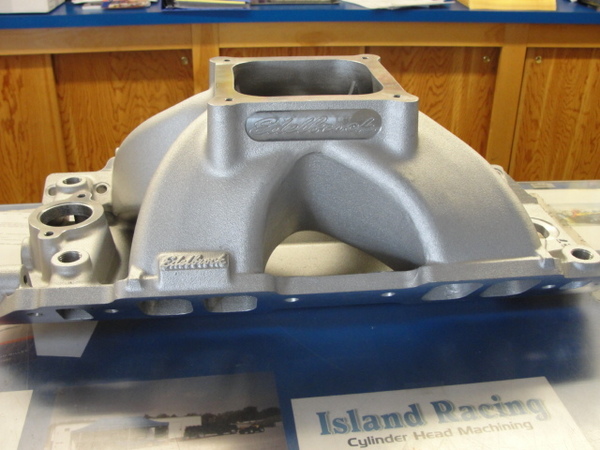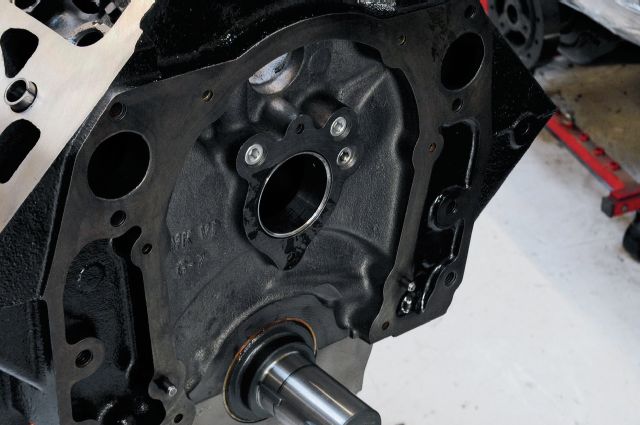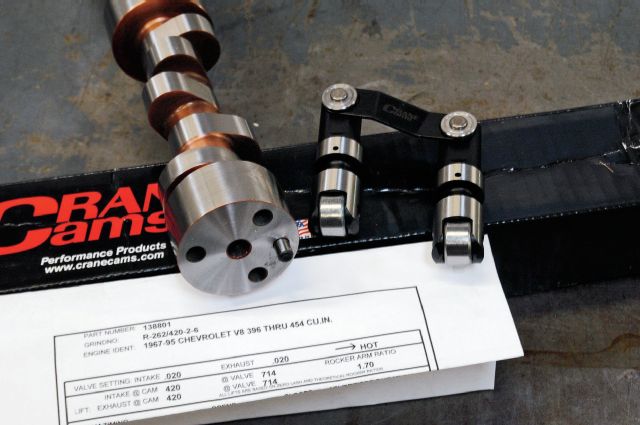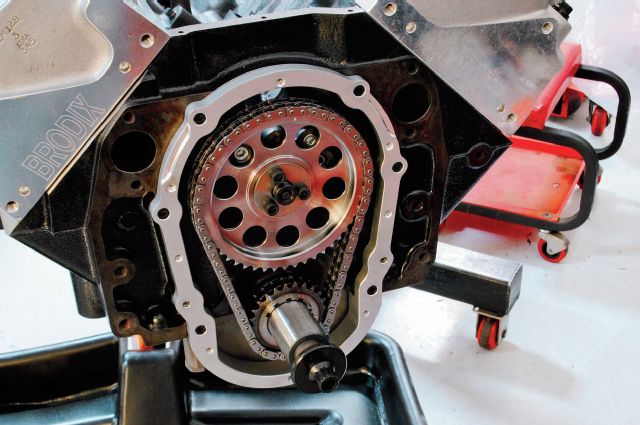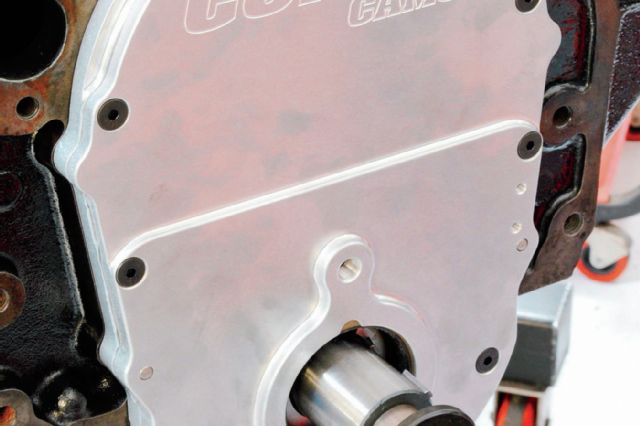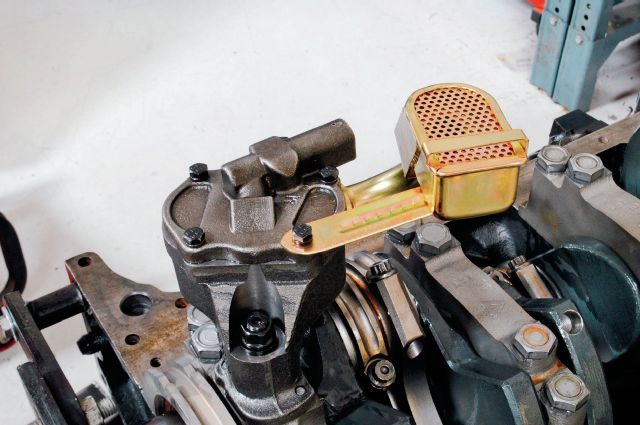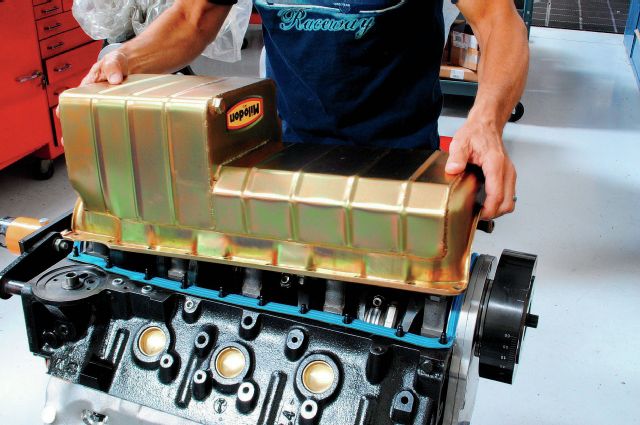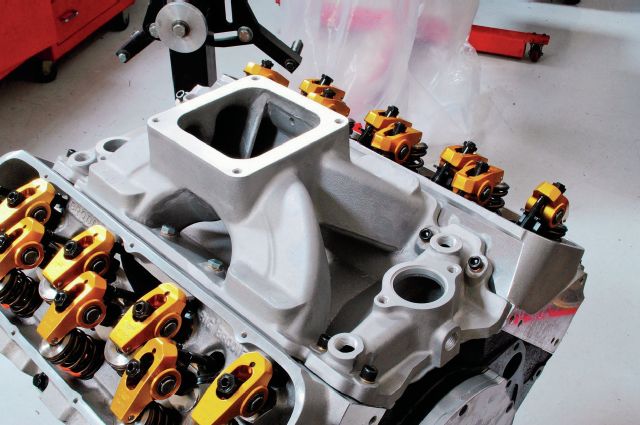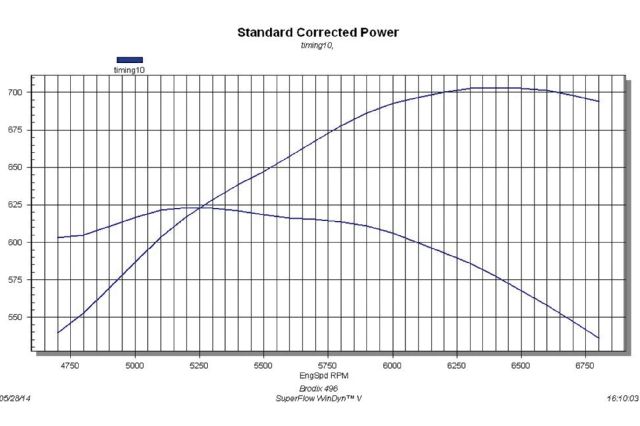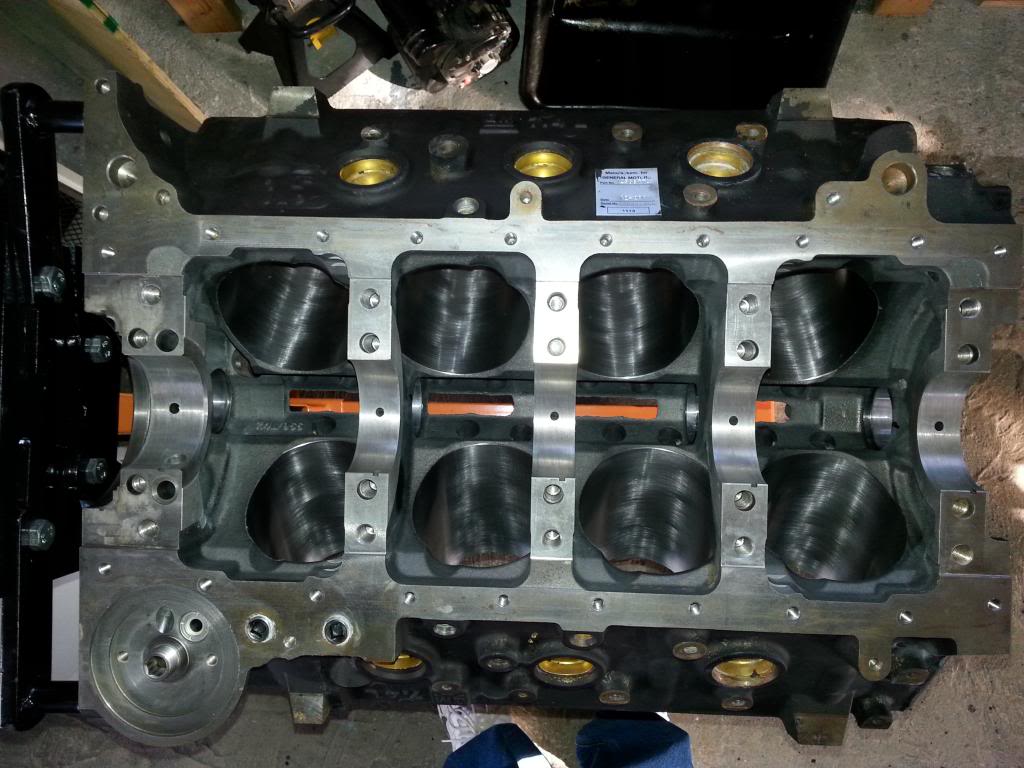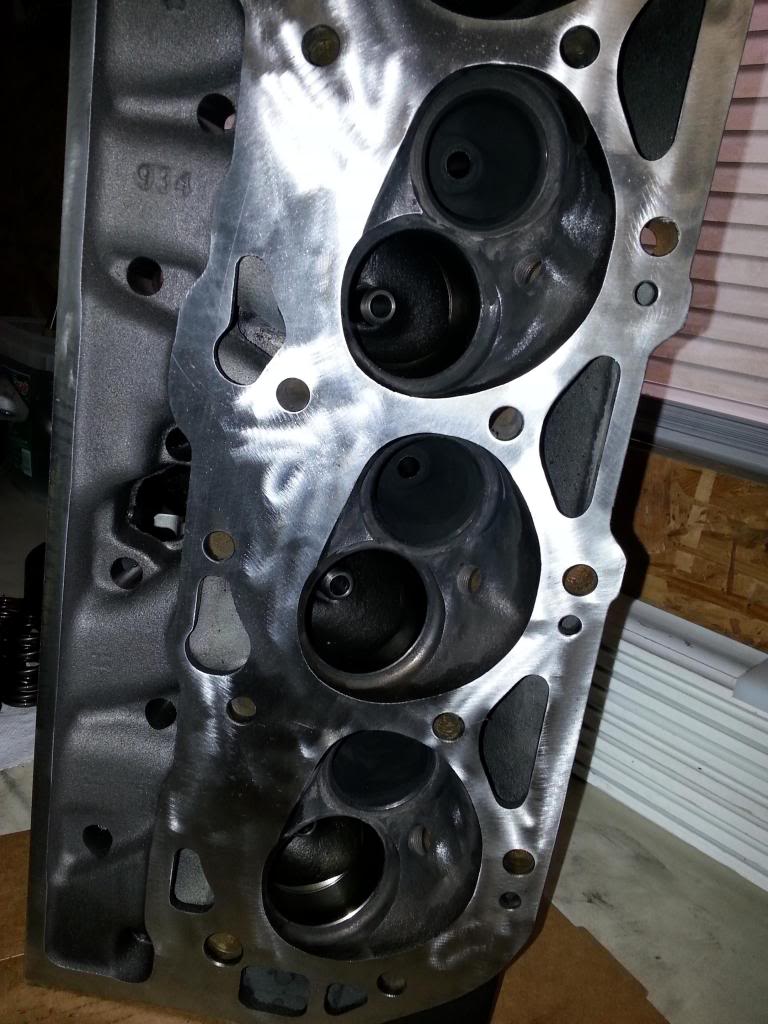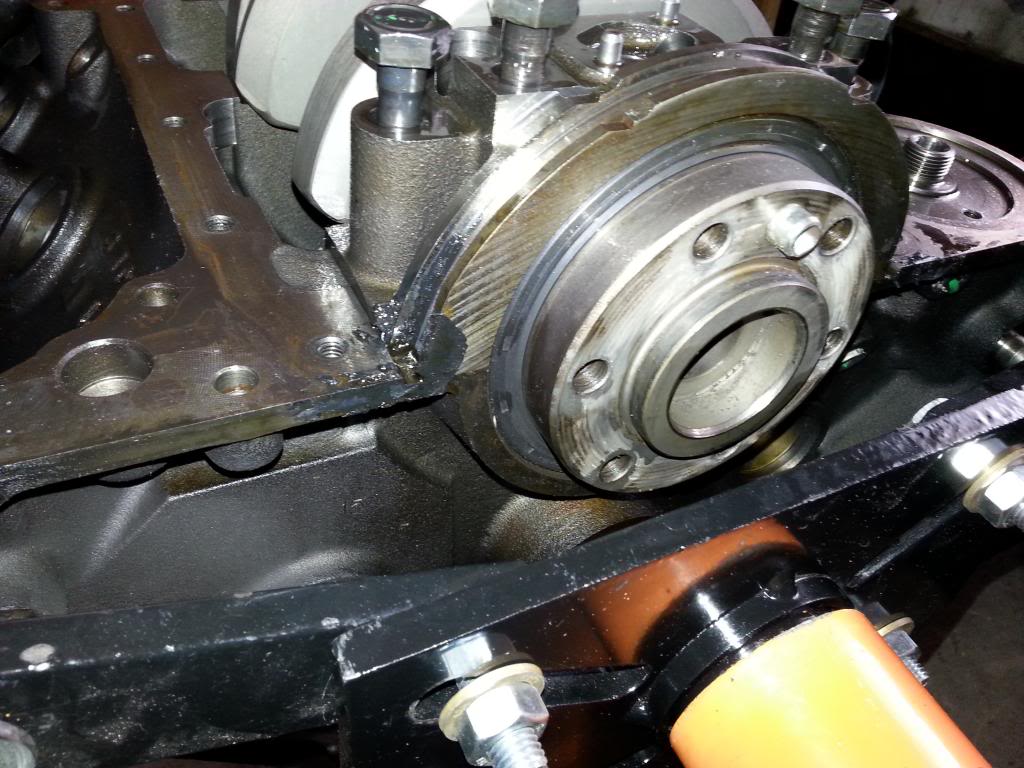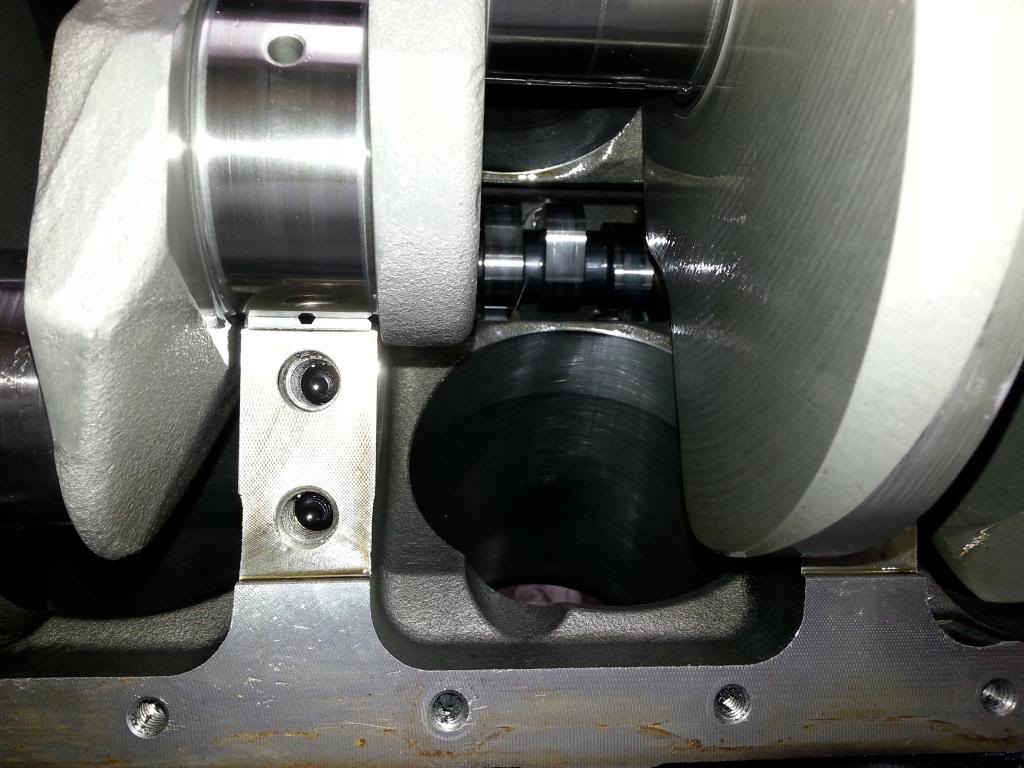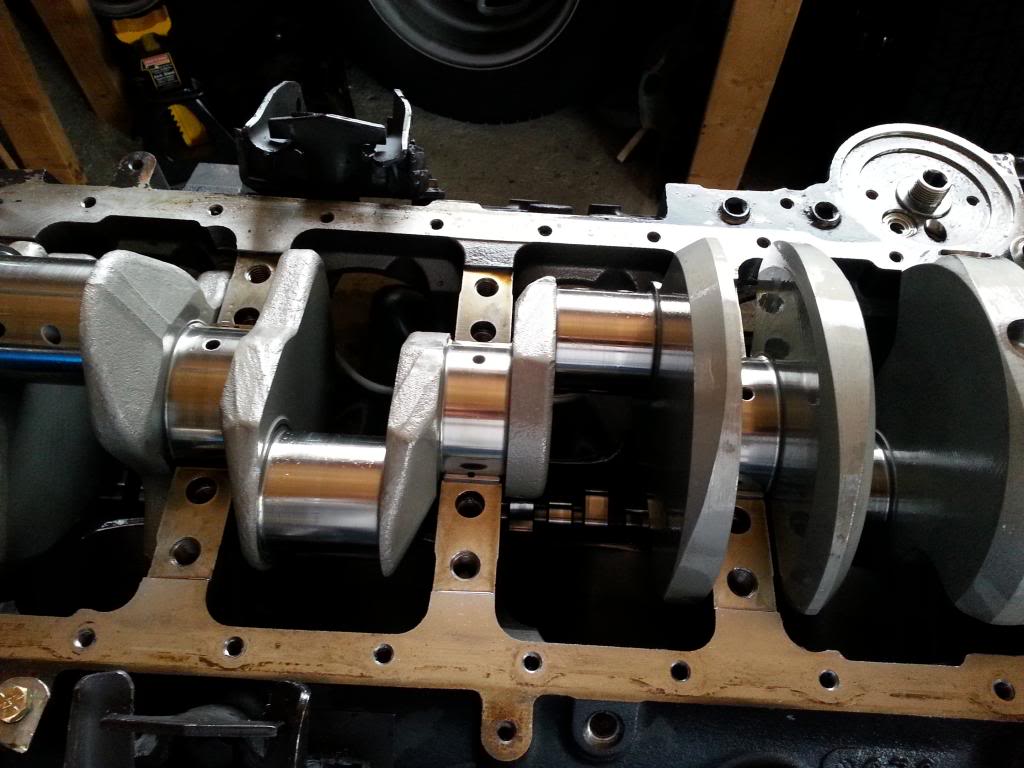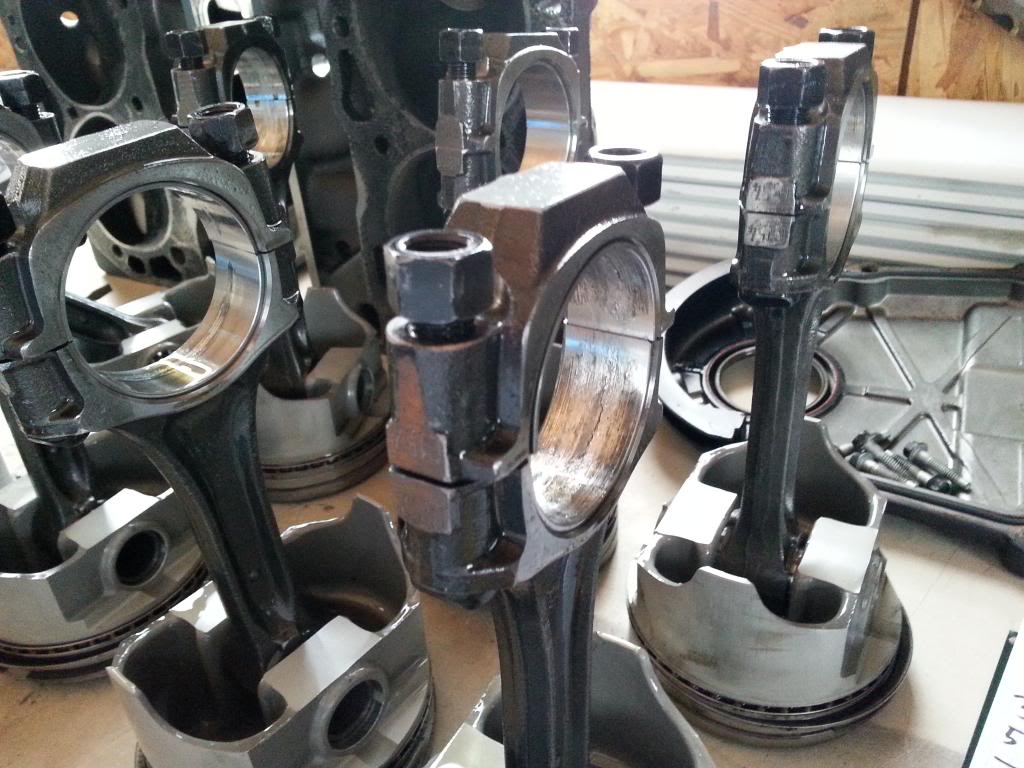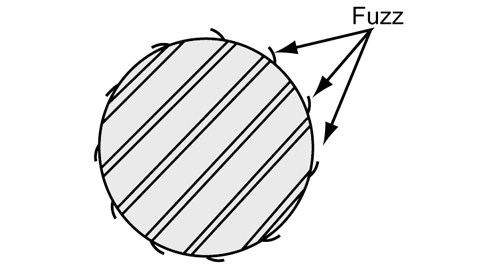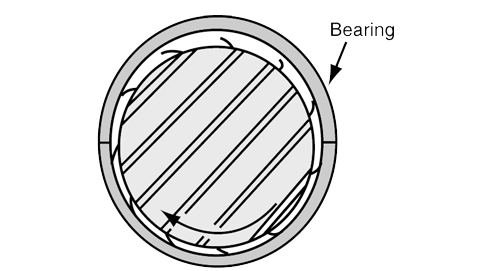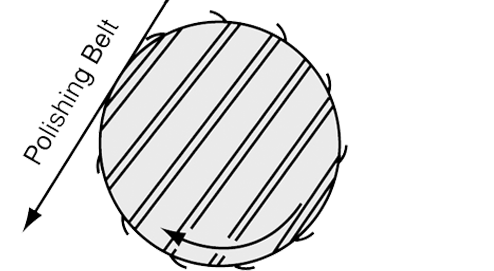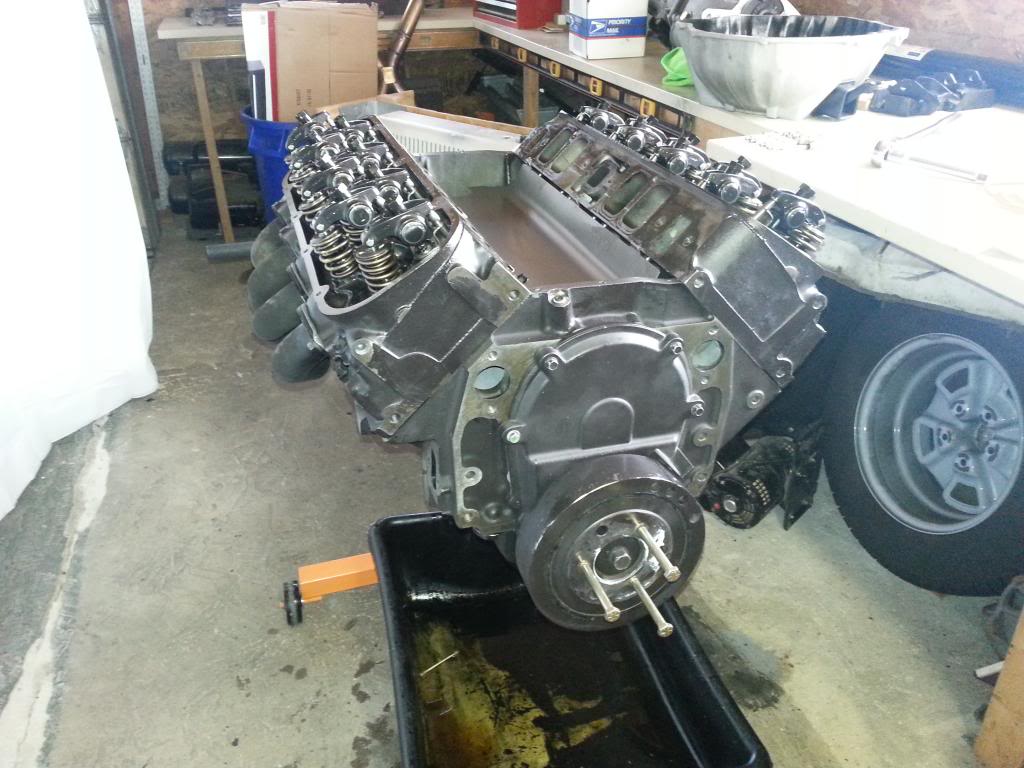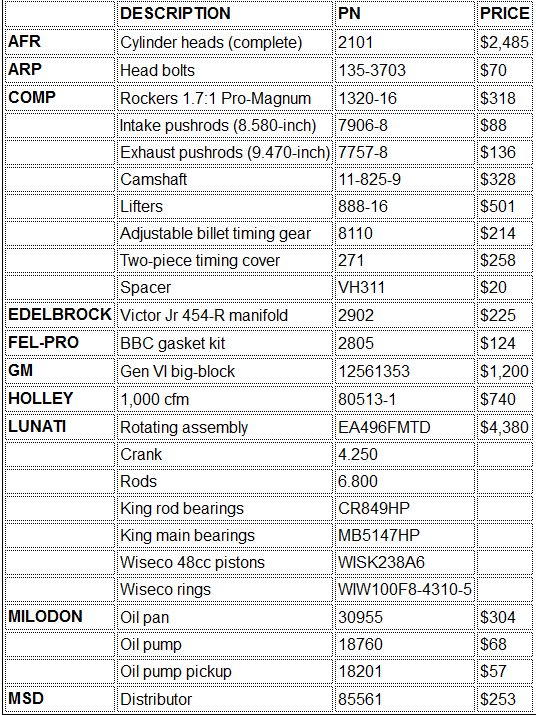http://www.superchevy.com/how-to/engine ... -big-bros/
Here at Super Chevy we can’t help but get excited about new products, especially when they are designed for big-blocks. Let’s face it, nothing rocks harder than big-inch engines, and if some displacement is good, then more is even better. Brodix recently contacted us and offered up a set of its new BB-3 Xtra 345 heads designed for high-horsepower Rat applications. What makes these new BB-3 heads so special? The new heads flow over 400 cfm, but though there are other BBC heads with matching flow numbers, these BB-3 Xtra heads offered the amazing flow with intake port volumes measuring just 345 cc. The combination of big flow and minimal port volume make the heads not only powerful, but versatile for a wide variety of applications.
Putting these numbers into perspective is the fact that a set of stock (iron) rectangle-port BBC heads check in with 325-330cc intake ports that flow just 330 cfm. Compared to stock BBC rec-port heads, the new Brodix heads offer a whopping 26 percent increase in flow with an insignificant 4-6 percent increase in port volume.
View Michelin Tires Winter Promotion
before you spend a good deal of money porting and un-shrouding any iron cylinder heads, keep in mind aluminum heads are easily repaired in a skilled and experienced automotive machine shop thats equipped to do those repairs but damaged iron cylinder heads are either much harder to repair or good door stops
http://garage.grumpysperformance.com/index.php?threads/iron-vs-aluminum-heads.389/#post-7266
The sizable flow numbers alone indicate that these heads will support over 830 hp, but we wanted to see how they faired on a more reasonable street/strip Rat. Not everyone builds max-effort race engines, so we decided to build something that represented a hot street engine that saw occasional strip action (or vice-versa). Since big inches equal big power, we decided that the Xtra 345s deserved something larger than your standard-issue 454. Besides, it gave us a chance to visit the local wrecking yard and snatch up a big-block core. There is nothing more satisfying than resurrecting a tired soldier and bringing it back to life, especially when said soldier will be ditching the iron peanut ports for a set of new Brodix aluminum heads. Though our first choice was an original Mark IV, we were unable to locate one and settled on a late-model Gen VI block. The Gen VI offered many desirable qualities, including four-bolt mains and factory hydraulic roller cam, but the late-model 7.4L block lacked the provision for a mechanical fuel pump. It should also be noted that the Gen VI block required a crank designed for the one-piece rear main seal.
The core short-block was stripped of its internals and machined by L&R Automotive to receive a forged rotating assembly consisting of a 4.25-inch stroker crank and 6.385-inch rods from Speedmaster combined with a set of forged pistons from Probe Racing. Each Probe piston featured an 18cc dome to produce a static compression ratio of 10.0:1 when combined with a 119cc combustion chamber. Finishing up the stroker short-block was a ring package from Total Seal and rod and main bearings from Clevite. Though the Gen VI block was designed to accept a hydraulic roller cam, we opted to install a solid roller grind, which required the elimination of both the cam retaining plate and lifter retention assembly. They were replaced with a solid roller cam from Crane Cams that offered 0.714-inch lift, a 262/272-degree duration split, and 106-degree LSA. The tall lifter bores in the Gen VI block required the use of a set of 0.300-tall solid roller lifters from Comp Cams. The cam was retained using a cam button, double-roller timing chain, and two-piece (aluminum) timing cover from Comp Cams.
The short-block was now in a position to accept its crowning glory in the form of the new Brodix BB-3 Xtra aluminum heads. They feature a unique combination of flow and port volume that made them not just extremely powerful but flexible as well. Big-block flow numbers exceeding 400 cfm are impressive enough, but even more so when they come from intake ports measuring just 345 cc. Big flow through small ports is the quintessential measure of efficiency. Big flow can support massive displacement and power numbers (over 830 hp in the case of the 417 cfm), but the 345cc port volumes mean the heads will be right at home on a smaller 454 or (in our case) 496. Heck, we wouldn’t hesitate to run these on a 427 or 396, though the power potential would be wasted on these milder (and smaller bore) applications.
Contributing to the impressive flow numbers was a rolled valve angle (from 26-24 degrees), a 2.30/1.88 valve combination, and an 0.800-lift roller-cam valvespring package.
Though our 496 stroker was purposely kept on the street/strip side of the equation, we made sure to minimize flow limitations to the Brodix heads.
The induction system consisted of a Holley 1050 Ultra Dominator feeding a single-plane intake from Speedmaster. The single-plane intake was chosen for its rpm ability, since we had plenty of head flow and cam timing. The induction system must work with the heads and cam timing to optimize power production in the desired rpm range. A dual-plane would limit power production above 4,000 rpm on this application, so we went with the 4500-series intake from Speedmaster.
Finishing up the Brodix-headed 496 was a Milodon oiling system, an MSD billet distributor, and set of Crane Gold roller rockers. After a break-in, we were rewarded with peak numbers of 703 hp and 623 lb-ft of torque. There is always more power to be had from any combination with increased compression ratio, wilder cam timing, and (of course) boost, but revel in the fact that this 496 was a perfect little street/strip stroker. We also smile knowing that should we decide to, these heads will support almost anything we decide to put under them.
Brodix Headed Test Engine 2/18
01. What we do to wring every last ounce of horsepower out of our Brodix-headed test engine.
4340 Stroker Crank 3/18
02. The four-bolt Gen VI BBC test mule was sporting 496 inches thanks to a 4340 stroker crank and rods from Speedmaster.
Pistons 4/18
03. Probe Racing supplied a set of 0.070-over pistons for our BBC build. The 18cc domes worked with the 119cc combustion chambers to produce a static compression ratio of 10.0:1—perfect for unleaded premium. The pistons were installed using a Total Seal ring package.
Generation 6 Block 5/18
04. The Gen VI block featured provisions for a cam retaining plate to be used with the factory hydraulic roller cam, but we opted to run a solid roller grind.
Crane Solid Roller Cam 6/18
05. The Crane solid roller cam offered 0.714-inch lift, a 262/272-degree duration split, and tight 106-degree LSA. The cam was teamed with a set of 0.300-tall (required for the Gen VI block) solid roller lifters from Comp Cams.
Double Roller Timing Chain 7/18
06. A double-roller timing chain was employed that required the use of a cam button and custom timing cover.
Comp Cams 8/18
07. Comp Cams stepped up to supply the necessary two-piece, aluminum Gen VI timing cover.
Milodon Hv Oil Pump 9/18
08. Oiling is critical so we installed this Milodon HV oil pump and pickup designed to work specifically with the supplied oil pan. Note the ARP pump stud and Extreme Duty brace on the pickup used to secure it to the pump (never rely on just a press fit).
16. Run on the dyno, the Brodix-headed 496 stroker produced peak numbers of 703 hp at 6,400 rpm and 623 lb-ft of torque at 5,200 rpm. Having massive head flow means you can make big power with milder cam timing and pump-gas compression ratios.
Making over 700 hp with a 496 is easy when you install heads capable of supporting over 800 hp. The Brodix BB-3 Xtra 345 heads combined massive head flow with minimal port volume, making them ideally suited for a wide variety of displacements and configurations. The Brodix heads teamed with the single-plane intake and Crane roller cam to produce 703 hp and 623 lb-ft of torque. The great thing about this combination is that it is now ready for nitrous, boost, or even wilder cam

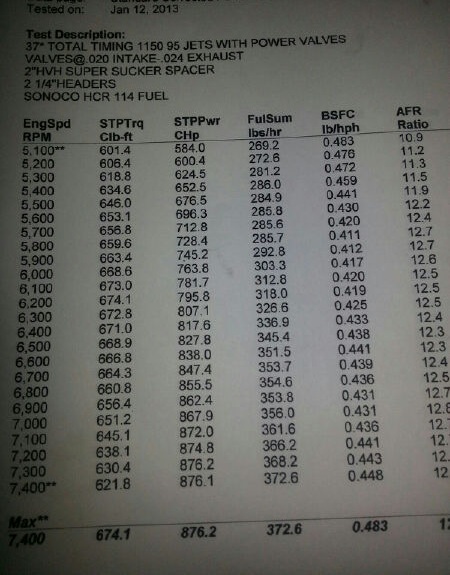
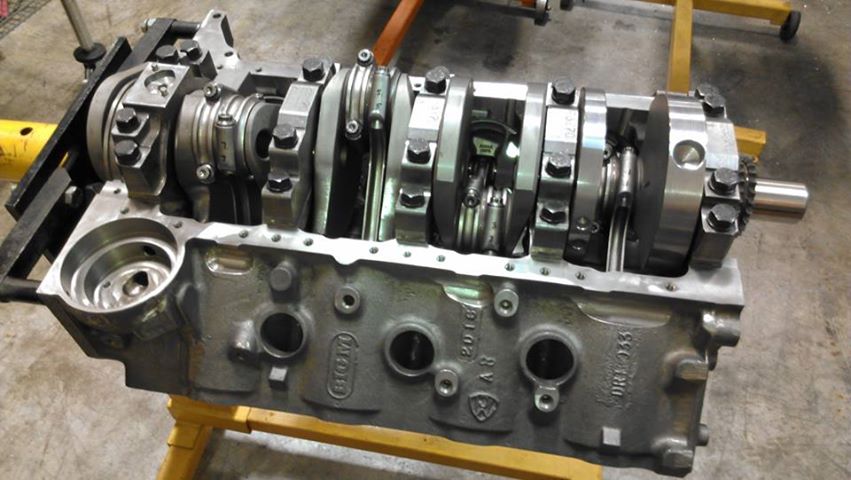
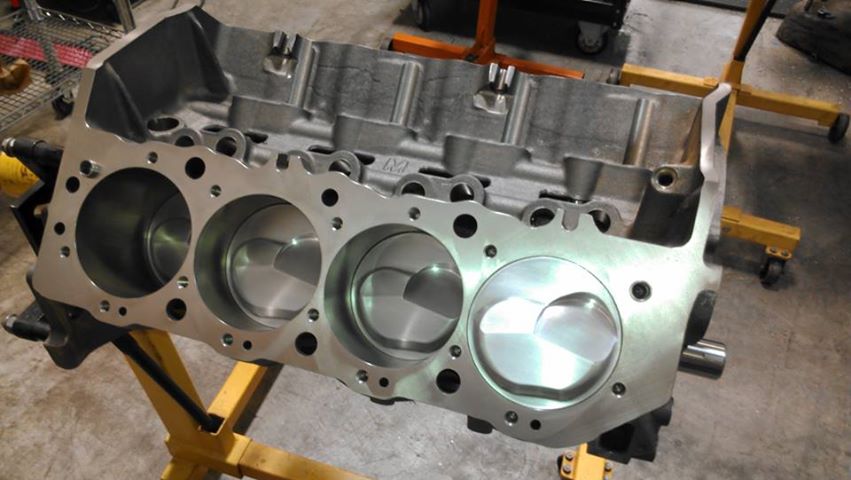
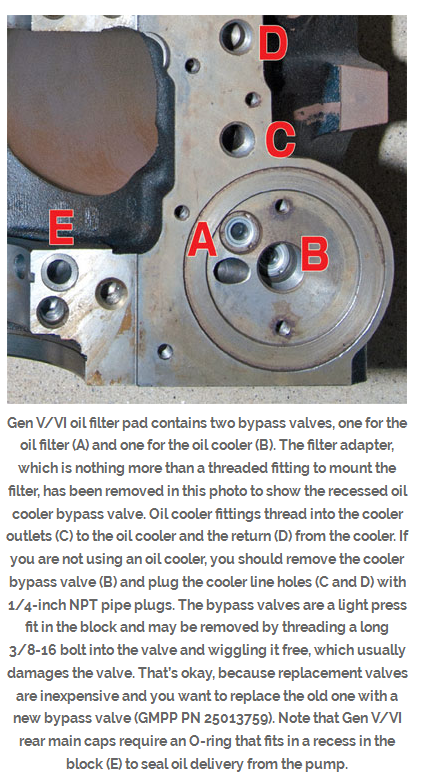
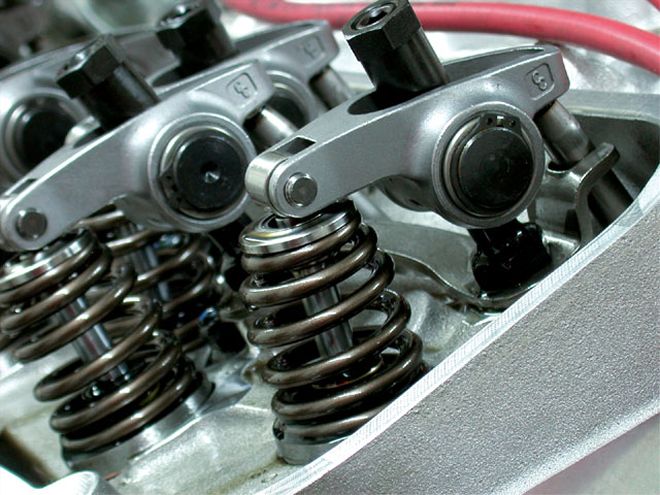

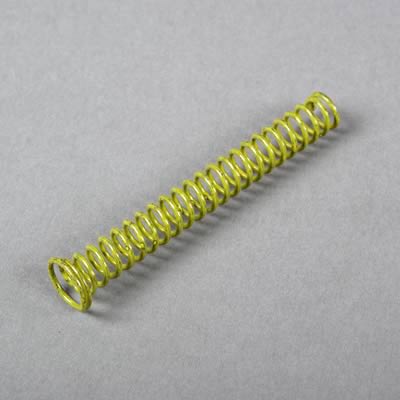

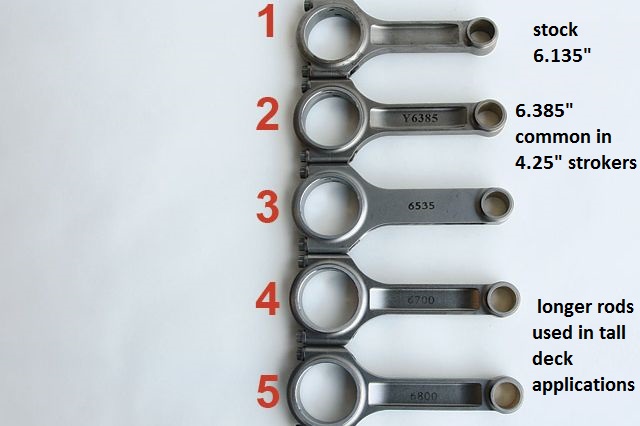
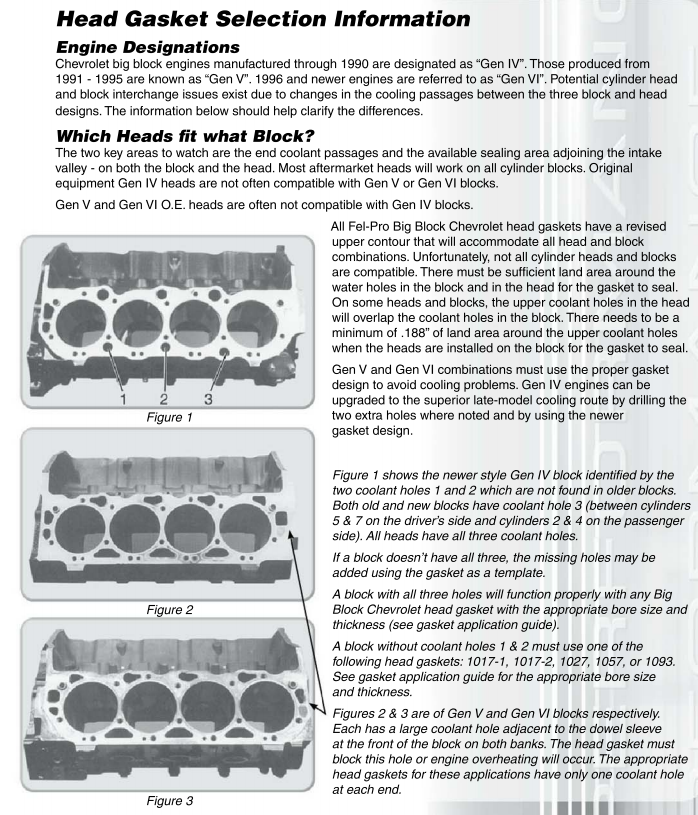
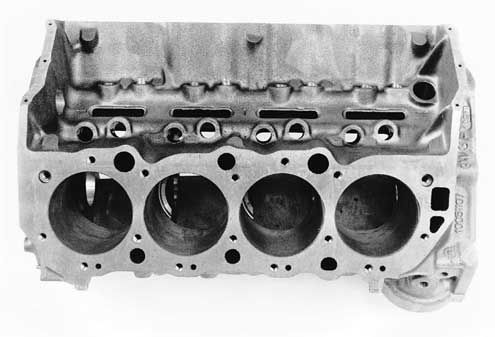
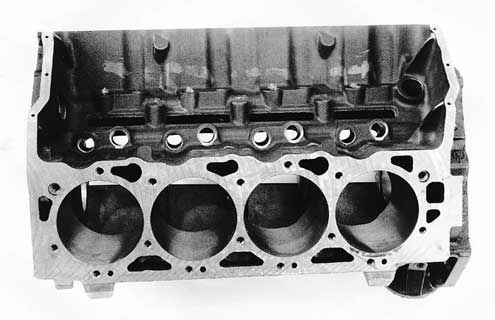

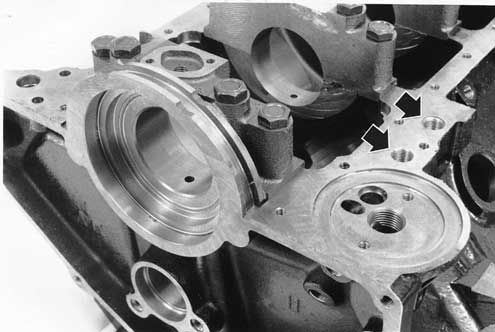
![7620_2[583x].jpg](/proxy.php?image=http%3A%2F%2Fwww.grumpysperformance.com%2Fjuly2017%2F7620_2%5B583x%5D.jpg&hash=5931892943d24f9505466692c10aa541)
